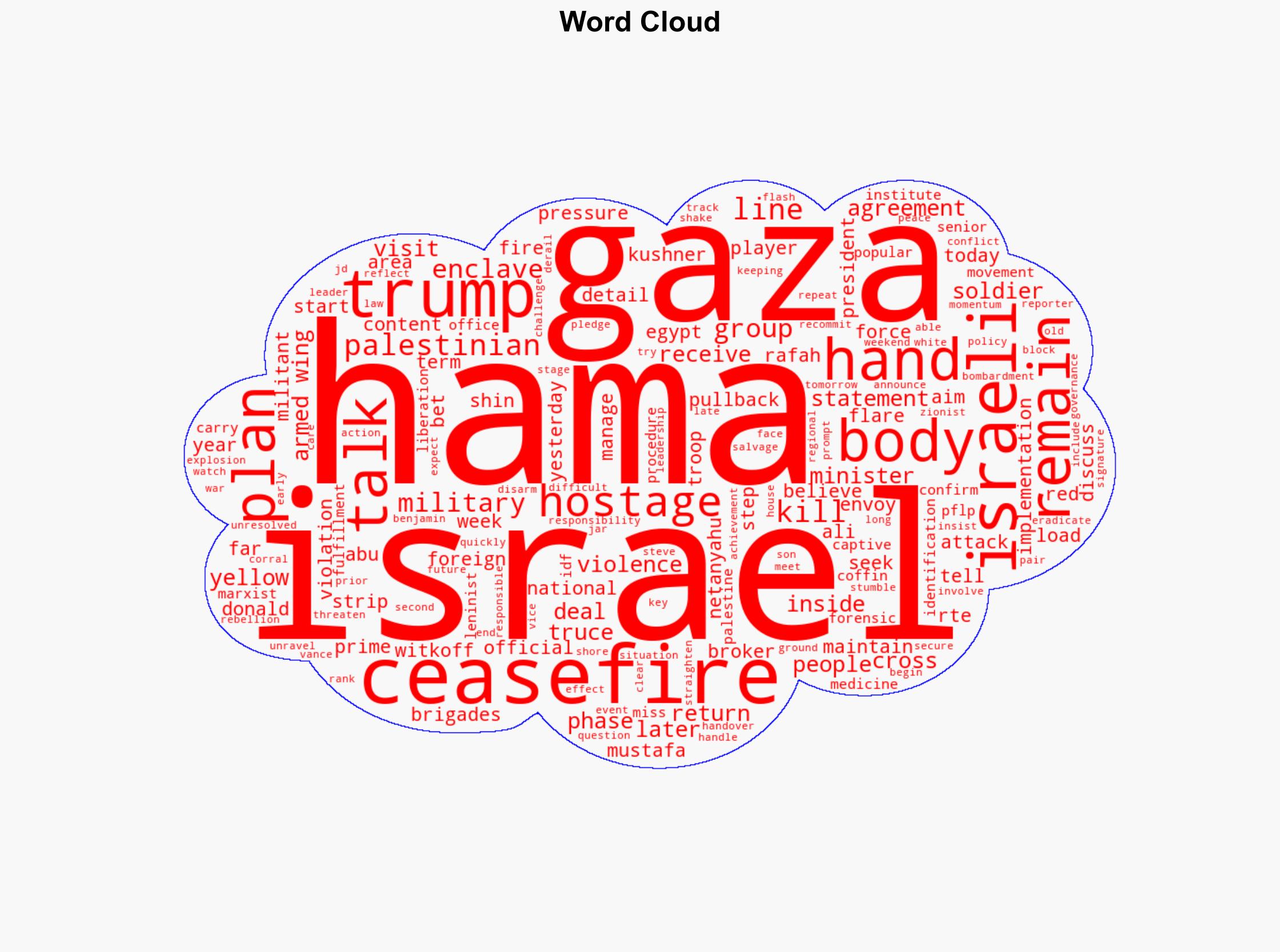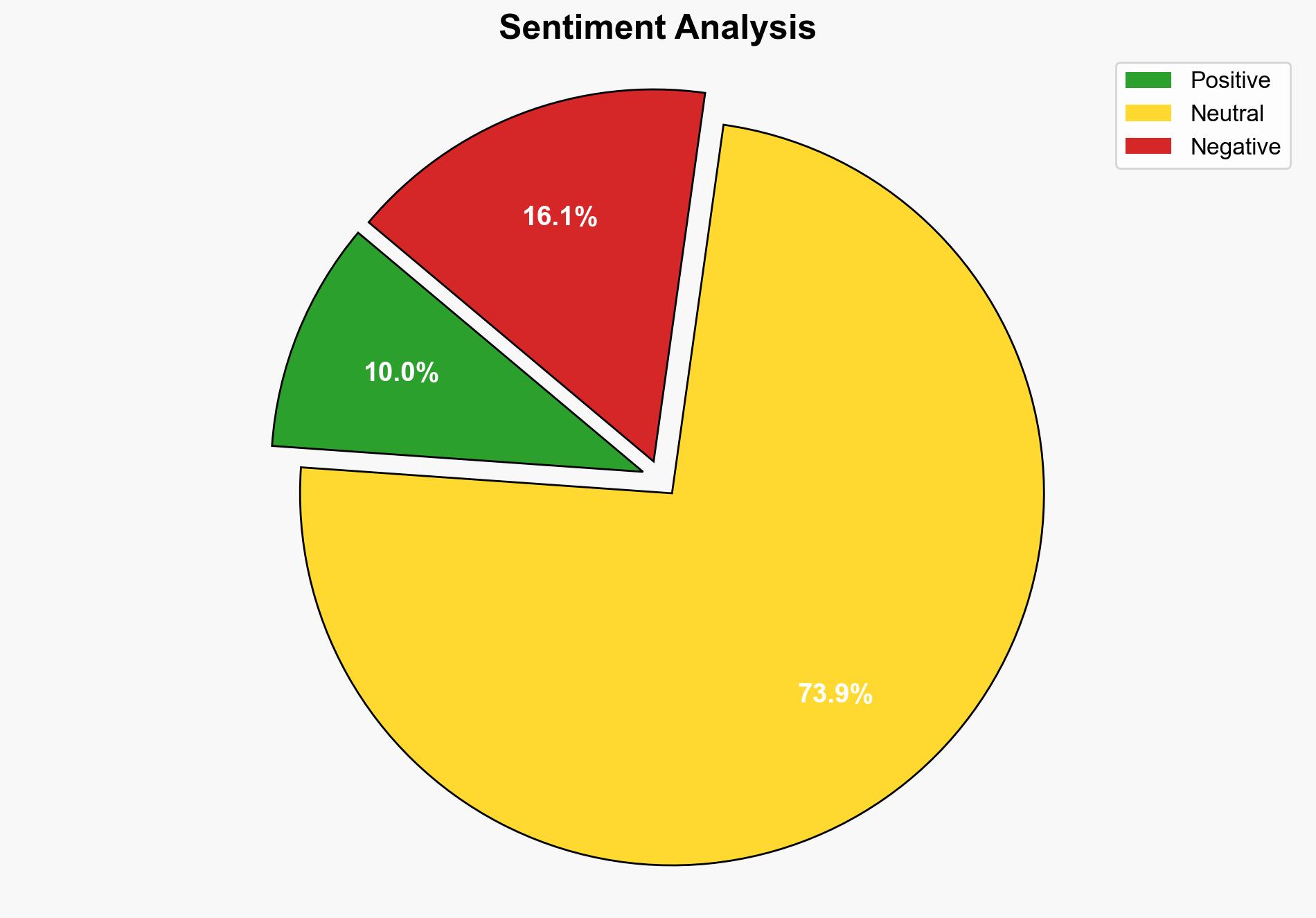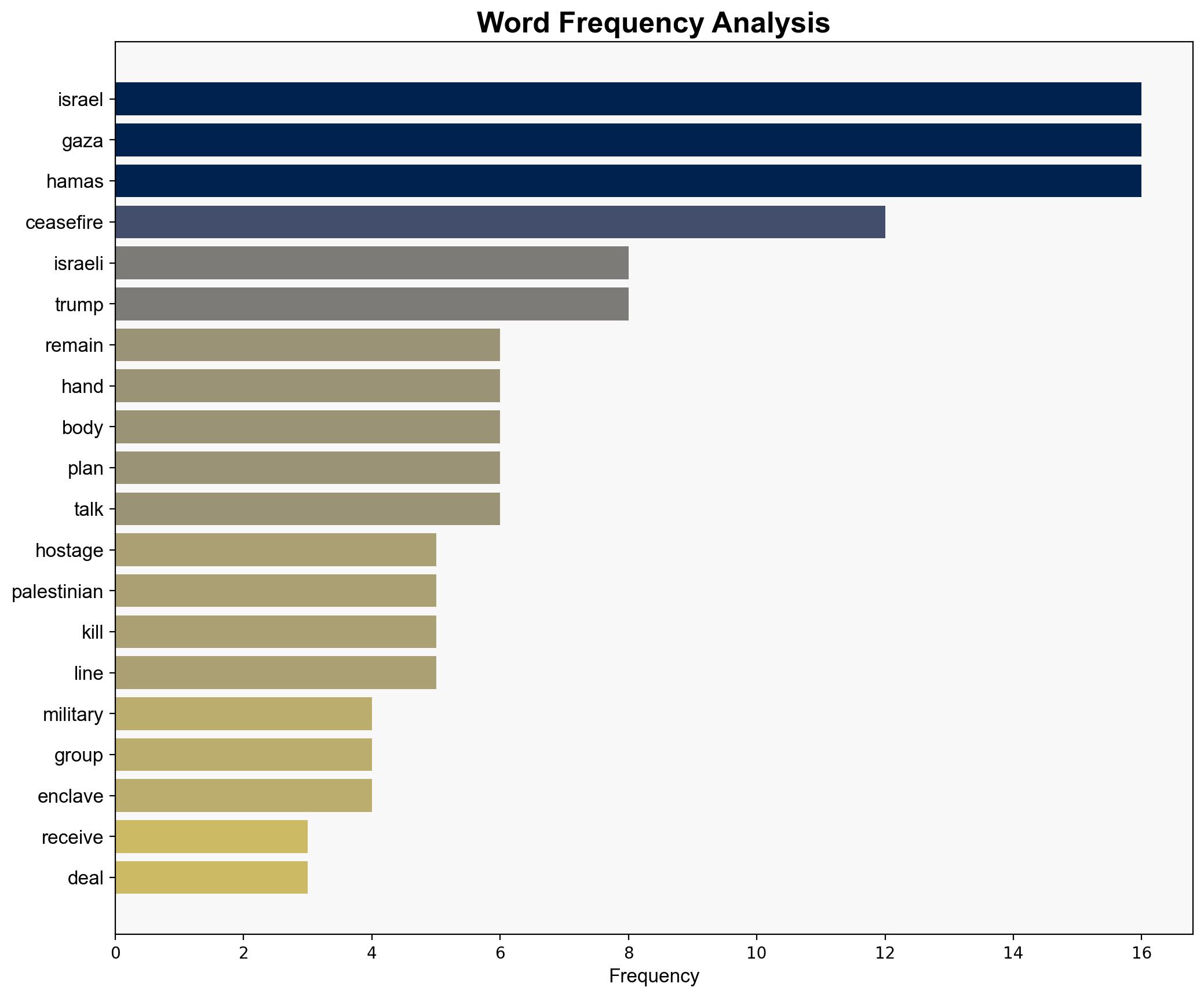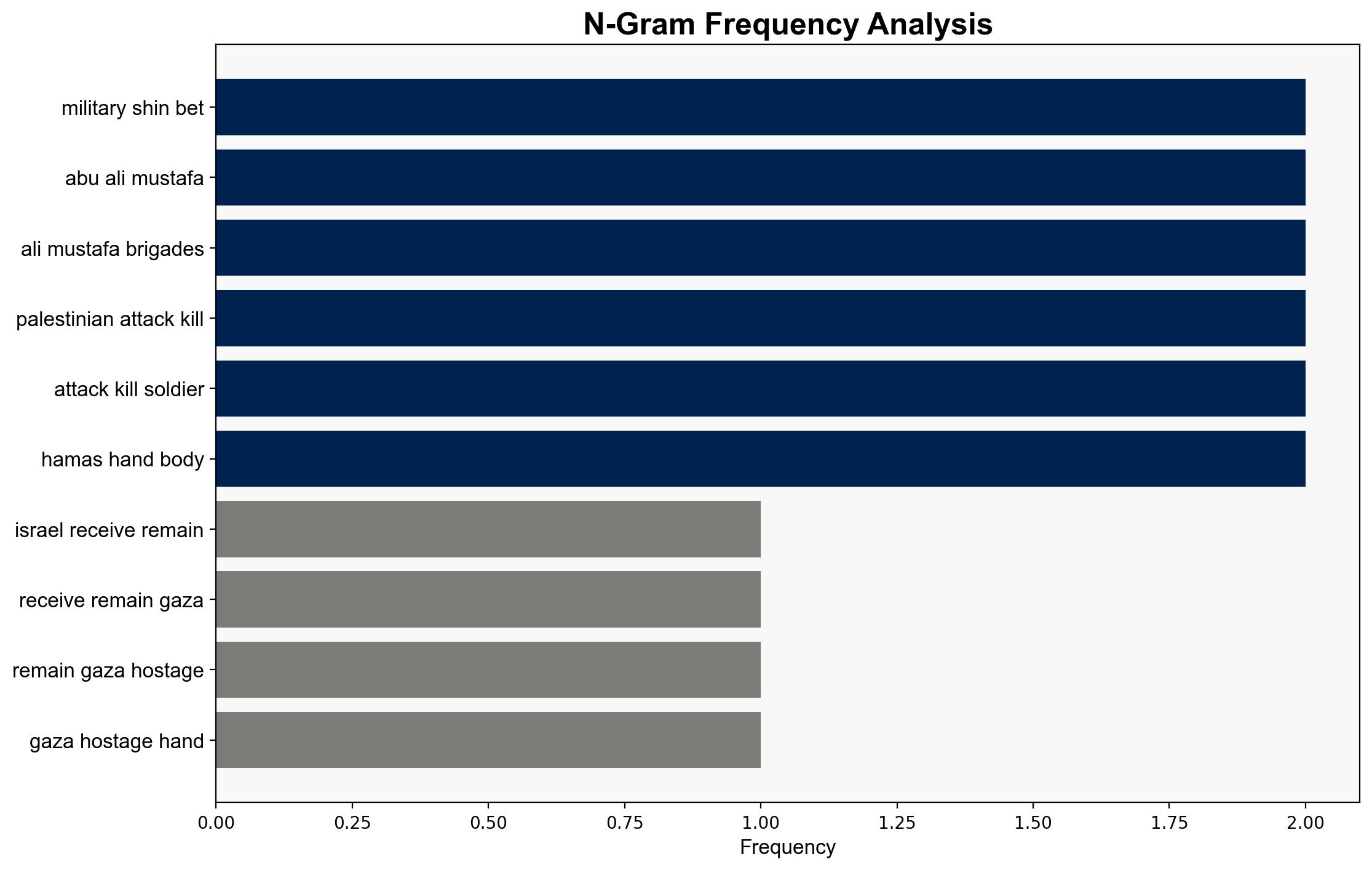Gaza ceasefire still in effect following strikes – Trump – RTE
Published on: 2025-10-20
Intelligence Report: Gaza ceasefire still in effect following strikes – Trump – RTE
1. BLUF (Bottom Line Up Front)
The current ceasefire between Israel and Hamas remains fragile, with recent violence testing its durability. The most supported hypothesis is that both parties are committed to maintaining the ceasefire due to international pressure, despite internal challenges. Confidence level: Moderate. Recommended action: Increase diplomatic engagement to reinforce the ceasefire and address unresolved issues such as disarmament and governance.
2. Competing Hypotheses
1. **Hypothesis A**: Both Israel and Hamas are committed to maintaining the ceasefire due to international pressure and the desire to avoid further conflict.
– **Supporting Evidence**: Statements from both sides reaffirming commitment; involvement of international envoys; strategic interest in maintaining regional stability.
2. **Hypothesis B**: The ceasefire is at risk of collapse due to internal pressures within Hamas and unresolved issues such as disarmament and governance.
– **Supporting Evidence**: Recent violence and attacks; reports of internal dissent within Hamas; unresolved key issues in the ceasefire agreement.
3. Key Assumptions and Red Flags
– **Assumptions**:
– International pressure is a significant factor in maintaining the ceasefire.
– Both parties have control over their factions to enforce the ceasefire.
– **Red Flags**:
– Reports of internal dissent within Hamas could undermine leadership’s ability to enforce the ceasefire.
– Lack of clear communication and visible boundaries could lead to accidental escalations.
– **Blind Spots**:
– The influence of other regional actors not explicitly mentioned, such as Iran or Qatar, on Hamas’s decision-making.
4. Implications and Strategic Risks
– **Patterns**: Cycles of violence followed by temporary ceasefires suggest a pattern of instability.
– **Cascading Threats**: Continued violence could lead to broader regional instability, drawing in neighboring countries.
– **Potential Escalation Scenarios**: Miscommunication or rogue actions by factions could trigger a larger conflict.
– **Geopolitical Dimensions**: The ceasefire’s success or failure could impact U.S. foreign policy credibility and influence in the Middle East.
5. Recommendations and Outlook
- Engage in proactive diplomacy with both parties to address unresolved issues like disarmament and governance.
- Enhance monitoring mechanisms to prevent accidental escalations.
- Scenario-based projections:
– **Best Case**: Successful diplomatic efforts lead to a long-term peace agreement.
– **Worst Case**: Breakdown of ceasefire leads to renewed large-scale conflict.
– **Most Likely**: Continued fragile ceasefire with intermittent violence.
6. Key Individuals and Entities
– Donald Trump
– Benjamin Netanyahu
– Steve Witkoff
– Jared Kushner
– Khalil al-Hayya
7. Thematic Tags
national security threats, regional focus, diplomacy, conflict resolution





